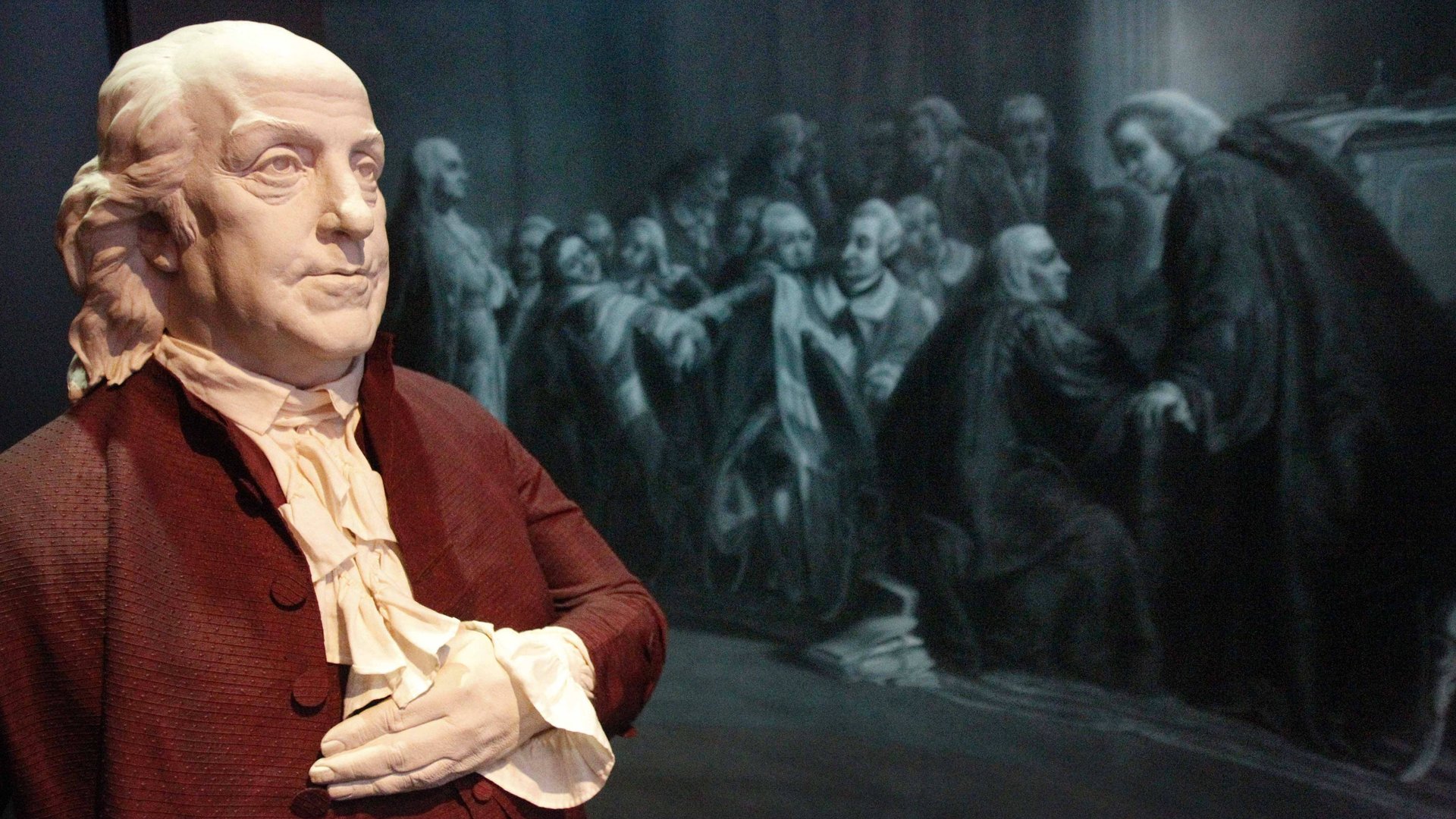Benjamin Franklin wasn’t a natural talent. Here’s how he taught himself to write
Benjamin Franklin may be the most prolific man in all of American history.


Benjamin Franklin may be the most prolific man in all of American history.
In his New York Times bestselling Benjamin Franklin: An American Life, Walter Isaacson writes of Franklin:
[He was] the most accomplished American of his age and the most influential in inventing the type of society America would become.
Franklin’s literal rags-to-riches story is jam-packed with insights on writing and a better life.
Born into poverty with 16 siblings, Franklin dropped out of school at age 10. How did Benjamin Franklin go from primary school dropout to the most accomplished American in all of history?
I wanted to find out.
In my own quest to teach myself how to write, I dug into Franklin’s autobiography. Guess what? He wasn’t born with it. By his late twenties, Franklin had become independently wealthy through his publications of the Pennsylvania Gazette and his famed Poor Richard’s Almanack.
Yet, as a teenager, Franklin was not good at writing. Determined to improve but with no teachers and no money, he decided to teach himself.
His autobiography tells exactly how he did it.
Most writing advice today sucks. It’s face-palm bad. Internet forums are infected with impractical advice like “just read more” or “keep trying kiddo!” Franklin’s advice, written almost 200 years ago, is the cure. He offers specific, actionable, and immediate steps you can use to start improving your writing today.
Let’s dig in.
1. Dissect and reconstruct
At age 16, Ben realized he’s bad at writing. His spelling and grammar were good, but: “I fell far short in elegance of expression, in method and in perspicuity…”
(“Perspicuity” means “clarity.” I didn’t know it either.)
Determined to improve, Ben dug into one of his favorite magazines, The Spectator:
I took some of the papers, and, making short hints of the sentiment in each sentence, laid them by a few days, and then, without looking at the book, try’d to compleat the papers again, by expressing each hinted sentiment at length, and as fully as it had been expressed before, in any suitable words that should come to hand. Then I compared my Spectator with the original, discovered some of my faults, and corrected them.
Wow, that’s some practical advice. Here it is in checklist format:
- Find an example of good writing and jot short notes for each sentence.
- Put the notes aside and come back in a few days.
- Try to “rewrite” the piece in your own words, using just your notes.
- Compare with the original and correct your faults.
2. Convert to poetry (and back again)
Next, Franklin tackled his mastery of the English vocabulary.
He used a technique that all master learners—be they soccer players, mathematicians, or Wall Street traders—understand. To accelerate learning, add artificial constraints. Lose your hands and you shall learn to type with your feet.
Franklin recognized writing poetry can accelerate his development as a writer:
But I found I wanted a stock of words, or a readiness in recollecting and using them, which I thought I should have acquired before that time if I had gone on making verses; since the continual occasion for words of the same import, but of different length, to suit the measure, or of different sound for the rhyme, would have laid me under a constant necessity of searching for variety, and also have tended to fix that variety in my mind, and make me master of it.
But not satisfied with just an idea (something I always stress here), he makes it into an actionable exercise:
Therefore I took some of the tales and turned them into verse; and, after a time, when I had pretty well forgotten the prose, turned them back again.
Here it is again:
- Take your prose and convert it to poetry.
- Wait a few days.
- Convert your poetry back into prose.
Repeat regularly (and vary the limitations) to see impressive gains in writing ability.
3. Understand structure
Now proficient in crafting sentences and selecting words, Franklin turns to the overall structure of his writing:
I also sometimes jumbled my collections of hints into confusion, and after some weeks endeavored to reduce them into the best order, before I began to form the full sentences and compleat the paper. This was to teach me method in the arrangement of thoughts.
Again, in bite-sized instructions:
- Take your notes from exercise number one and jumble them up.
- Wait a few weeks.
- Reassemble the sentences as best as you can.
- Get feedback by comparing to the original.
This exercise teaches writers to see and understand structure and how to create it, forcing them to constantly train and stretch the mental muscle responsible for organizing thoughts on the page.
4. The secret sauce
That’s plenty to work on already, but there’s one last ingredient to the Benjamin Franklin’s success formula.
Franklin’s secret sauce:
My time for these exercises and for reading was at night, after work or before it began in the morning, or on Sundays, when I contrived to be in the printing-house alone, evading as much as I could the common attendance on public worship…
Franklin would surely tell you this: all his advice is useless without the secret sauce.
And the secret sauce is obsession. An obsession with what he loved to write and loved to read, and an obsession with his goal to improve each and every day of his life.
This post originally appeared on Medium.